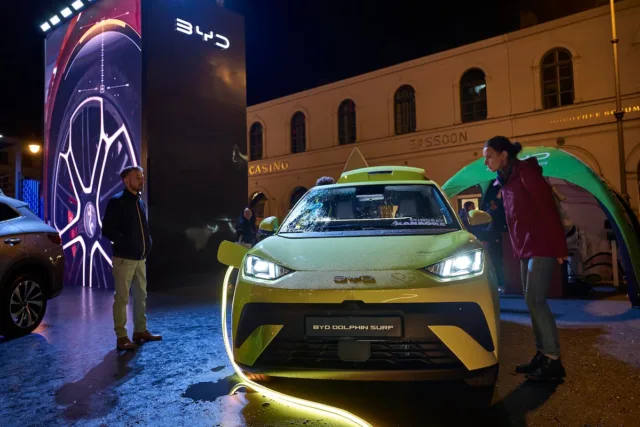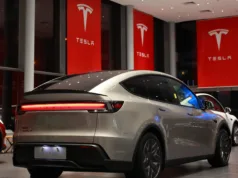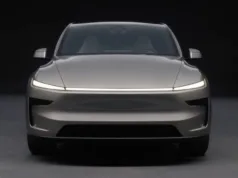
BYD, the Chinese car manufacturer competing with Tesla to be the world’s leader in electric vehicles, has experienced a meteoric rise. Its ascent is of the kind that only seems possible in the technological fairytales so beloved by the leaders of the People’s Republic, echoing the country’s transition from its humble origins in the Mao Zedong hard times to its global conquest in the 21st century.
The firm, which was founded in 1994, was originally dedicated to manufacturing rechargeable batteries for electronic devices. At the height of the mobile phone boom, it signed major deals with giants like Nokia. BYD didn’t enter the car business until 2003, when it acquired a struggling Chinese state-owned automobile company that had dabbled in the production of missiles and other defense components. In 2005, it manufactured its first car. In 2008, it decided to focus on electric vehicles. That same year, it received a boost from Warren Buffett’s Berkshire Hathaway fund, which invested $230 million. Berkshire has gradually sold those shares, completing its exit this year with a net profit estimated at around $7 billion.
Doubts about the company’s profitability contributed to Buffet’s departure. In the second quarter of 2025, BYD recorded a drop in profits for the first time in three and a half years. Its sales fell in September for the first time since 2024. The corporation’s competition in Asia, where it delivers 80% of its orders, has become extreme. Chinese authorities have called for an end to a fierce price war that has put pressure on profit margins across the sector. Consumption has slowed, and BYD has lowered its sales target for this year from 5.5 million to 4.6 million units.
Despite these clouds, the company is still the industry leader in China. It is also number one in sales of electric, hybrid and hydrogen models in the country (where new energy models account for 50% of retail purchases), as well as worldwide. It sold 4.27 million units in 2024, 41% more than in 2023. Of these, 1.76 million were pure electric, slightly below Tesla, which it surpassed in 2025 according to trade publications. It is relying heavily on exports for its future strategy — this year, the firm aims to sell one million units abroad.
Listed on the Hong Kong and Shenzhen stock exchanges, BYD is China’s ninth-most valuable private company, and was worth around $110 billion in 2024, according to the Hurun list, a Forbes-style rundown that focuses on China. In 2024, the company posted revenues of $109 billion, a year-over-year increase of 29% and a net profit of $5.6 billion, up 34%.
Its penetration in the European market has accelerated, even after the new EU tariffs. In August, its sales in Europe grew by 201.3%, up to 1.3% of the market according to the European Automobile Manufacturers’ Association. In Spain, it is one of the brands that has propelled Chinese cars to second place in terms of sales volume, behind only German manufacturers, according to the Spanish Association of Automobile and Truck Manufacturers.
A handful of problems
But this expansion has not been free of challenges. In Brazil, BYD has been accused of building a factory with Chinese workers laboring in conditions of semi-slavery (the company denies the allegations) and has had to pause plans to build a factory in Mexico due to growing geopolitical tensions.
The firm is also the result of a carefully planned government initiative. At the entrance to one of its factories in Xi’an, there is an inscription by Chinese President Xi Jinping: “Developing new energy vehicles is the only way for China to transform itself from a major automobile country into an automobile powerhouse.”
A year ago, EL PAÍS paid a visit to this plant, which has the capacity to produce 3,000 vehicles a day and is an orderly chaos of buzzing, squeaking production lines and mechanical arms that move car skeletons in the process of taking shape. A tour guide pointed out that part of the firm’s secret is that it carries out 100% of the research and development for three key components — the electric motor, electric control and the battery — in-house.
60,000 people work in the city-factory and nearly 70% of them live on the premises, which is typical in China. They can be seen getting on and off an elevated train (also made by BYD) that travels the perimeter of the complex.
The company, which started out with 20 employees, today employs 885,400. It operates factories in Hungary, Thailand, Uzbekistan and Brazil, in addition to China, with others planned in Turkey and Cambodia. This week, Reuters wrote that Spain is its top choice for the company’s new European factory. Experts highlight its strategy of investing in its own technology and comprehensive control of the value chain, from lithium mines to final transportation via its own fleet of ships (it currently has seven).
BYD’s strategy also determines its choice of battery: it mainly uses lithium models. “And since China’s lithium mines account for 60% of the world’s total, they do not face the risk of supply being cut off,” says Yin Xiaopeng of the School of International Trade and Economics (UIBE) in Beijing. They also design their own chips, another safeguard against geopolitical turbulence and trade restrictions.
“Competition in the Chinese market is ferocious and at the global level, the true battlefield of electric vehicles is technology,” adds Yin, who says BYD stands out due to its innovation. The company’s battery models are well-regarded, and it is the second biggest worldwide producer in the sector, behind its fellow Chinese firm CATL. In addition to using its own batteries in cars, it supplies other automobile companies — including Tesla, its biggest rival.
Founder and CEO of BYD Wang Chuanfu is a man with a serious and anodyne countenance, the antithesis of the eccentric Elon Musk, who in 2011 let loose a cackle when asked about the competition with BYD. “Have you seen their cars?,” he joked to a Bloomberg reporter. Wang is a member of the Communist Party, has one of the biggest fortunes in China (in 2009 he was at the top of the list of the country’s wealthiest) and his life serves as a tidy reflection of the changes that have taken place in the country over the last six decades.
Wang was born in 1966 to a family of farmers in Anhui province, and into hunger. He lost his parents when he was a teenager, but managed to go to college with the support of the eldest of his seven siblings, who was tasked with taking care of the family. Years later, that brother would be one of the key pieces of the BYD empire, becoming its vice-president and head of logistics.
After graduating with a degree in physics and metallurgical chemistry, in 1987 Wang was admitted to a post-graduate program at the Nonferrous Metals Research Institute in Beijing. He studied batteries and excelled as a researcher. In 1993, when the institution established a battery company in Shenzhen, he was entrusted with the task of overseeing it.
Shenzhen, an old fishing town, is today a futuristic metropolis known as the Chinese Silicon Valley. In the 1990s, it buzzed with activity. Deng Xiaoping, Mao’s successor and architect of the country’s period of openness and reform, designated it as one of the special economic zones where China was opening up to the world and experimenting with capitalist formulas.
Take-off
Wang arrived just as the economy was taking off. “I always had a dream: to be an entrepreneur and industrialize the technology I was researching,” he said in an article published by state agency Xinhua. These were the years in which mobile phones and consumer electronics were in rapid development — and everything needed batteries. He saw his opportunity, and in 1995, left what in China is referred to as the “rice bowl” (a secure job with a state-owned company) and founded his own battery company. He named it BYD, an acronym for Build Your Dreams. It resonated with the spirit of the times, in a China where communist leaders were beginning to accept businessmen into their ranks.
In 2003, seeking a foothold in the automotive sector, he bought Xi’an Qinchuan Automobile, a car manufacturer formerly of the state-owned arms conglomerate Norinco. From then on, he would achieve milestones in the production of combustion vehicles, and then electric cars.
BYD’s size has grown exponentially as it has moved from manufacturing components and assembling for multinationals like Apple (it remains one of its suppliers) to creating its own higher-value products. “BYD reflects a very typical pattern of Chinese business evolution: how an SME can go from being a mere auxiliary supplier to becoming a global leader,” says Yin. “That path, based on initial survival, diversification and then strategic specialization, is a reference not only for Chinese companies, but also for SMEs in other countries looking to scale up.”
In China, the firm’s models are renowned for being affordable utility vehicles for ordinary families. They also have luxury SUV models. An army of drivers from Chinese taxi apps use their cars. “It has a pretty good reputation,” admits 23-year-old Xiao Li. A rideshare driver, he has been transporting customers behind the wheel of a BYD on the streets of China’s ancient capital of Xi’an for three years. He highlights the cars’ price value and durability. “After working with them for several years, [I know] they are a very reliable option,” he concludes.
Sign up for our weekly newsletter to get more English-language news coverage from EL PAÍS USA Edition









